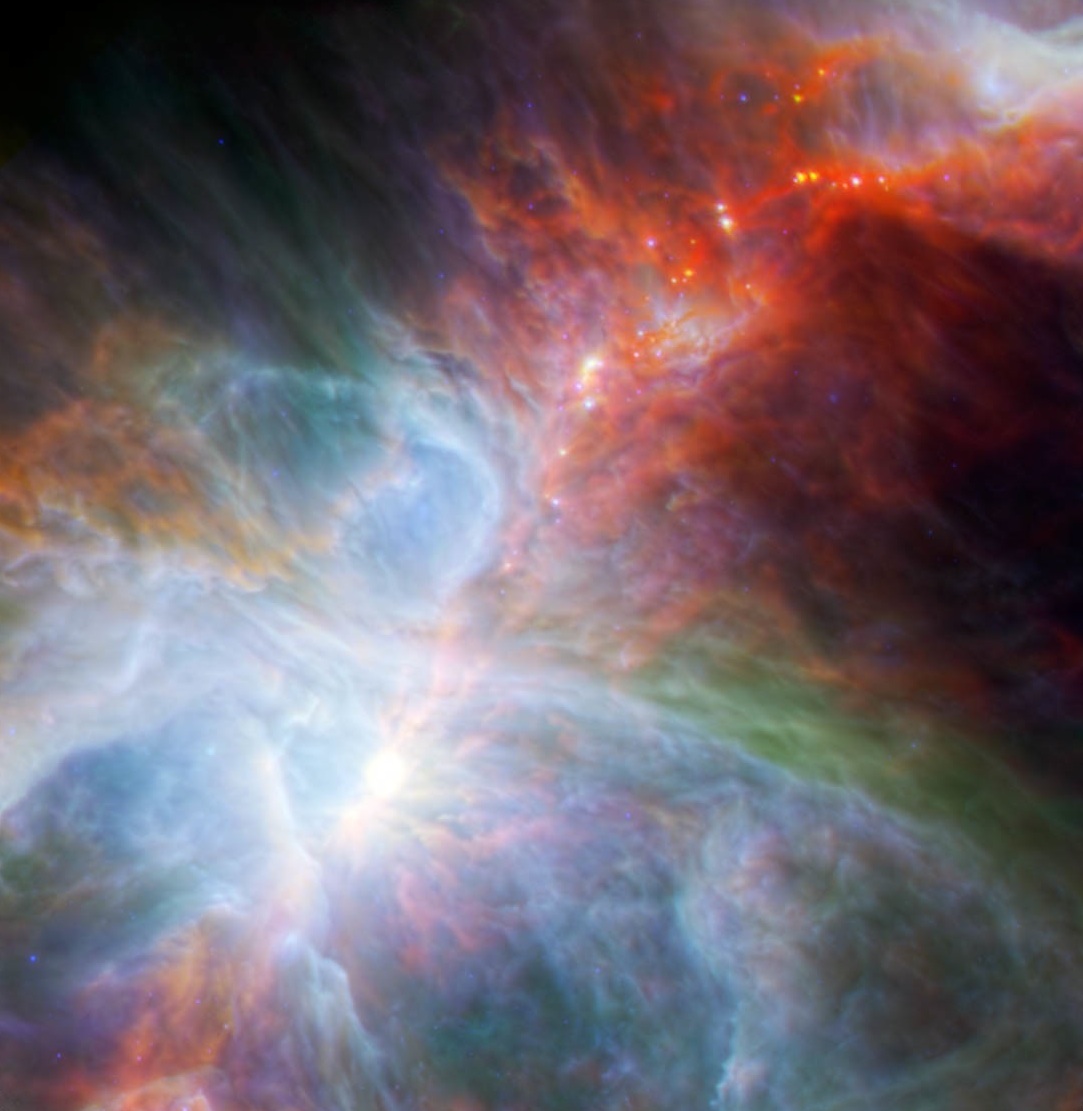| Basic Information | |
| What is this? | The Orion Nebula |
| Where is it in the sky? | In the Sword of Orion |
| How big is it? | The image shows a region around 10 light years across |
| How far away is it? | Around 1350 light years from Earth |
| What do the colours represent? | The red regions show cold dust, condensed into clumps around protostars. The blue regions are warmer dust, which is heated by fully-formed stars. |
Downloads
See this object in:
The Orion Nebula is the nearest large star-forming region, and provides an excellent opportunity for astronomers to study in detail how stars form. In visible light, astronomers see stars and the hot gas between them. But in infrared light it is the dust that shines the brightest, and that is what is seen in this combined image from the Herschel and Spitzer space telescopes.
The warmer dust, seen by Spitzer at mid-infrared wavelengths, lies in similar locations to the hot gas seen in visible light. This warm dust, shown here in blue, is heated by the intense light from the hot, yound stars in the centre of the nebula. Herschel, meanwhile, sees colder dust, shown in this image in red and green, surrounds stars that are still in the process of forming.
These incredibly cold clumps of gas and dust are collapsing under their own gravity, and over hundreds of thousands of years their centres will become hotter and denser. Eventually, the temerature and density will be enough to ignite nuclear fusion in the core, and a star will be born. But for now, the clumps are still very cold, typically below -150 Celsius.
The process in which stars form is not well understood, and recent Herschel observations have deepened the mystery. By observing the Nebula once a week for six weeks, Herschel observed the cold dust to brighten and darken with time. Variations over such short timescales were unexpected, and the cause is still unknown. While the entire process of star formation takes hundreds of thousands of years, processes in the clouds of materal surrounding the protostars are occuring on much shorter timescales.
Detailed Information
HYSOVARS
Billot et al. (2012) Astrophysical Journal 735 L35

